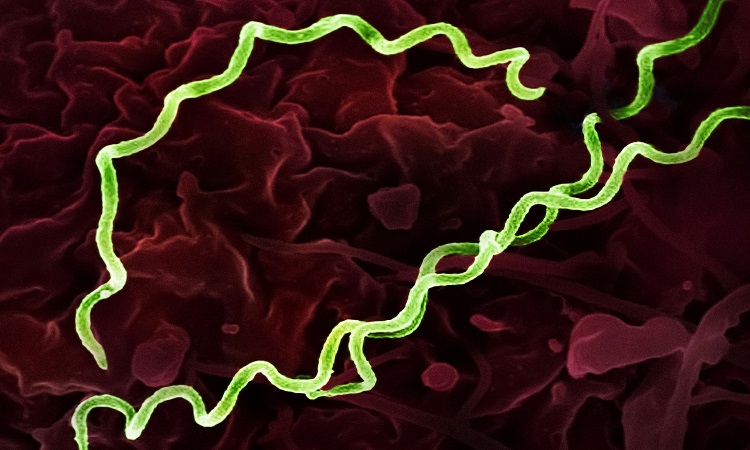STDs remain a significant public health concern in the United States. Some regions, including two Georgia cities, experience alarmingly high STD rates. This article delves into the shocking statistics, exploring causes, consequences, and potential solutions. Examining the situation aims to raise awareness about the issue’s urgency.
Our goal is to promote action for reducing STD rates and improving sexual health in these communities.
Alarming STD Statistics in Georgia Cities
To comprehend the severity of the situation, let’s delve into the startling STD statistics in two major Georgia cities: Atlanta and Savannah.
Atlanta has been consistently featured among the top cities in the United States with alarmingly high STD rates. According to data from the Centers for Disease Control and Prevention (CDC):
Atlanta’s STD Infection Rates per 100,000 People in 2021
- HIV Cases: With 1,307 cases per 100,000 residents, Atlanta faces an exceptionally high burden of HIV infections, reflecting the challenges in managing this persistent health issue.
- Chlamydia Cases: Atlanta has a staggering 32,004 cases of chlamydia per 100,000 residents, which is significantly above the national average. This indicates a pressing need for increased awareness, testing, and prevention efforts.
- Gonorrhea Cases: The city reported 12,118 cases of gonorrhoea per 100,000 residents. This high incidence of gonorrhoea underlines the importance of comprehensive sexual health education and accessible healthcare services.
- Syphilis Cases: The data shows 2,551 cases of syphilis per 100,000 residents. The increase in syphilis cases, especially among specific demographics, is a concerning trend that requires targeted interventions.
Columbus, with a population of around 200,000, may have fewer total cases compared to larger cities. However, per capita rates of STDs in Columbus should not be overlooked. STDs continue to be a major public health issue in both cities. Healthcare professionals, policymakers, and community leaders must prioritize efforts to reduce STD prevalence and enhance community well-being.
Savannah’s STD Infection Rates per 100,000 People in 2021
- HIV Cases: Savannah reported 1,696 cases of HIV per 100,000 residents. This indicates a significant presence of HIV in the city, highlighting the need for prevention and treatment efforts.
- Chlamydia Cases: With 2,633 cases of chlamydia per 100,000 residents, Savannah faces a substantial burden of this common STD. Chlamydia can have serious health consequences if left untreated, making early detection and treatment crucial.
- Gonorrhea Cases: The city reported 765 cases of gonorrhoea per 100,000 residents. Although the rate is lower compared to other STDs, gonorrhoea remains a public health concern and necessitates targeted intervention.
- Syphilis Cases: Savannah reported 62 cases of syphilis per 100,000 residents. While the number is relatively low compared to other STDs, the presence of syphilis suggests the importance of comprehensive sexual health education and awareness campaigns.
Savannah is a city with a large population and a popular tourist destination that sees a large influx of visitors. This tourism dynamic can contribute to the spread of STDs as people from diverse backgrounds interact nearby. It underscores the need for local efforts and measures to educate and protect tourists.
Given the statistics, it is evident that Savannah faces a significant challenge in addressing STDs. Local health authorities, healthcare providers, and community organizations must collaborate for effective strategies. Prevention, testing, and treatment plans are crucial components of these collaborative efforts. For comprehensive impact, the focus should extend to the resident and transient visitor populations. The goal is to reduce the prevalence of STDs and enhance sexual health in Savannah. Working together, stakeholders can create a healthier environment for all community members.
Read more: Chemotherapy and Herpes
Causes of High STD Rates
The high STD rates in Atlanta and Savannah, Georgia, can be attributed to a combination of factors that contribute to the prevalence of these infections. Understanding these causes is essential in developing effective strategies to combat the issue.
A. Lack of Comprehensive Sex Education
Georgia’s public schools face criticism for their abstinence-based sex education programs. These programs often fail to provide students with essential knowledge for making informed decisions about sexual health.
- Abstinence-only education lacks crucial information on safe sex practices and contraception.
- Comprehensive sex education covers safe sex, condom use, and regular STD testing.
- Implementing comprehensive sex education can reduce STD rates significantly.
B. Limited Access to Healthcare
Many individuals in these cities face significant barriers when trying to access healthcare services, including limited access to affordable STD testing and treatment.
- Affordability and Accessibility: The cost of healthcare and the availability of clinics that offer confidential and affordable STD testing and treatment can be a significant challenge for many residents.
- Expanding Healthcare Access: Expanding access to healthcare, particularly for low-income populations, is a crucial step in reducing STD rates. This includes opening more low-cost clinics, providing free or subsidized testing, and ensuring access to affordable medications.
C. Stigma and Misinformation
The stigma associated with STDs can act as a deterrent for individuals seeking testing and treatment. Misinformation about STDs can further contribute to this problem.
- Stigma’s Impact: Stigma surrounding STDs can lead to feelings of shame, embarrassment, and fear of judgment, which can prevent individuals from discussing their sexual health or seeking medical help.
- Open Conversations: Promoting open and non-judgmental conversations about sexual health can help reduce stigma. This can be done through educational campaigns, community discussions, and healthcare provider training.
- Challenging Misconceptions: Addressing common misconceptions about STDs through public awareness campaigns can empower individuals to seek testing and treatment without fear or shame.
D. High-Risk Behaviors
Engaging in high-risk sexual behaviours, such as unprotected sex and having multiple sexual partners, contributes significantly to the spread of STDs.
- Educational campaigns should emphasize consistent condom use, regular testing, and fewer sexual partners to promote safer sex practices.
- Public health initiatives can include counselling and behavioural interventions to educate people about the risks of their sexual behaviours.
- Targeting high-risk populations is crucial in promoting safer sex practices through educational campaigns.
- Behavioural interventions aim to help individuals make informed choices about their sexual health and safety.
Addressing these causes comprehensively and collaboratively is essential to combat the high STD rates in Atlanta and Savannah. It requires a combination of policy changes, improved healthcare access, destigmatization efforts, and education to empower individuals to protect their sexual health effectively.
Read more: The Silent Spread of Dormant STDs in the United Kingdom
Solutions to Address High STD Rates
To effectively combat the high STD rates in Atlanta and Savannah, a multi-pronged approach is required, involving various stakeholders and strategies. Here are five critical solutions to address the issue:
A. Comprehensive Sex Education Reform
- Comprehensive sex education programs in schools are crucial for providing accurate information on sexual health and contraception.
- These programs should cover safe sex practices, contraception methods, regular STD testing, and the concept of consent.
- Advocating for evidence-based sex education ensures young individuals receive comprehensive and reliable information.
- Incorporating a wide range of topics in sex education helps promote informed decision-making among students.
- Age-Appropriate Curricula: Tailor sex education programs to different age groups, ensuring the information is developmentally appropriate.
- Inclusivity: Address diverse sexual orientations, gender identities, and relationships to create an inclusive and non-discriminatory curriculum.
B. Increased Access to Testing and Treatment
Expanding access to affordable STD testing and treatment services, especially in underserved communities, is crucial to reducing STD rates. Key initiatives include:
- Establishing More Clinics: Open additional low-cost or free clinics in areas with limited access to healthcare services.
- Community Outreach: Implement mobile testing units and community outreach programs to reach individuals who may not have easy access to healthcare facilities.
- Subsidized Testing: Provide subsidized or free testing to individuals who cannot afford it, ensuring that cost is not a barrier to getting tested.
C. Public Awareness Campaigns
Launch comprehensive public awareness campaigns that destigmatize STDs, promote regular testing, and encourage safe sex practices. These campaigns should:
- Challenge Stigma: Address the stigma surrounding STDs through educational campaigns that emphasize that STDs are common and treatable medical conditions.
- Promote Testing: Encourage individuals to get tested regularly, emphasizing that early detection can prevent complications and further transmission.
- Highlight Safe Sex: Promote the use of condoms and other barrier methods to prevent the spread of STDs.
D. Partner Notification and Contact Tracing
Enhance partner notification and contact tracing efforts to identify and notify individuals who may have been exposed to an STD. This involves:
- Trained Healthcare Workers: Ensure healthcare workers are trained to conduct effective partner notification and contact tracing.
- Privacy and Confidentiality: Guarantee privacy and confidentiality to individuals who may be hesitant to disclose their sexual contacts.
- Rapid Testing and Reporting: Streamline the testing and reporting process to minimize delays in notifying potentially affected individuals.
E. Support for High-Risk Populations
Develop targeted interventions and support programs for high-risk populations, including men who have sex with men (MSM) and minority communities. These interventions should include:
- Culturally Competent Care: Provide culturally sensitive healthcare services that address the unique needs of different communities.
- Community Outreach: Engage community organizations to reach high-risk populations and provide education, testing, and treatment services.
- Mental Health Support: Offer mental health and counselling services to address the emotional aspects of living with or being at risk of STDs.
Coordinated implementation of solutions involves healthcare providers, educators, and community organizations. Policymakers play a crucial role in the collaborative effort to reduce STD rates in Atlanta and Savannah. Working together, these stakeholders can contribute to improving sexual health in both cities. The focus is on lowering high STD rates and fostering overall well-being in Atlanta and Savannah communities. A united approach can lead to meaningful progress in addressing sexual health challenges in these cities.
Conclusion
The shocking STD rates found in Atlanta and Savannah, Georgia, demand urgent attention and action. Addressing root causes and consequences is crucial for reducing rates and improving public health. Implementing proposed solutions can contribute to enhancing the well-being of affected communities. Collaboration among government agencies, healthcare providers, educators, and community organizations is essential. Prioritizing sexual health will play a pivotal role in achieving a healthier future for residents in these cities. Together, we can progress significantly towards healthier communities and improved overall well-being.
Reference: Many Georgia Cities Ranked In The Top 25 For The Highest STD Rates In The US



